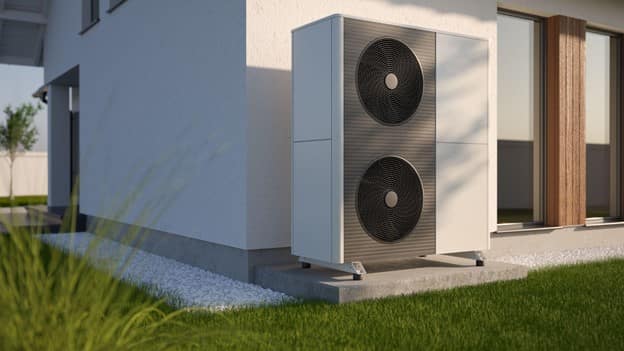It is important to carefully consider how you’d like to heat and cool your property, particularly if you’re looking for ways on how to reduce carbon footprint and your energy bill. As home heating and cooling technologies account for a significant percentage of energy costs, more and more homeowners are opting for more energy-efficient alternatives, such as air source heat pumps for homes. This article will explore some of the pros and cons of air source heat pumps.
Pros
Low carbon emissions
An air source home heat pump uses a small amount of electricity to generate heat. In contrast to many other home and water heating forms, this method does not use gas. Thus, you lower your carbon footprint by making the switch from coal or electricity to ASHPs. Air source heat pumps produce 3 to 4 units of energy for every unit of electricity used, thus reducing emissions considerably. By consuming less energy, you can reduce your impact on the environment and your energy bills over time.
Reduced utility costs
Using ASHPs will reduce your energy costs because the outside air is used for heating and cooling. Savings depend on several factors, such as the type of heating or cooling system you already have, your location and local fuel prices. The savings will be greater if you switch from electric or coal-based systems. On average, homeowners who switch from coal to ASHPs can save around £415. Meanwhile, homeowners who replace their G-rated gas boilers with ASHPs can expect potential annual savings of around £910.
Low maintenance
Heat pumps are often described as ‘fit and forget’ technologies since they don’t require much maintenance. To ensure that the heat pump is operating efficiently, it should be serviced annually.
Cons
Relatively high upfront cost
Several factors affect the cost of ASHPs, such as how the system is installed, what type of system you choose, and the size and layout of your home. Installations typically cost £8,000 upwards. In contrast, installing a gas, electric or oil furnace usually costs less than £5,000.
Installation requirements
In most cases, ASHPs are used in conjunction with underfloor heating for maximum efficiency. Installing an underfloor heating system for the first time can mean higher installation costs.
Your home must also be well-insulated to get the most out of an ASHP. If heat escapes from your home easily through doors, windows or walls, keeping the area warm will require more energy.
Noisy operations
There is some noise created by ASHPs while they operate, similar to air conditioners or rain. In case of noise concerns, ensure the heat pump is installed away from your living and sleeping areas.
Considering a heat pump for your home? At Centraheat, we provide full central heating installation services for homeowners in the Swindon Wiltshire area.
Contact our team for advice on the heating system that best fits your needs.




